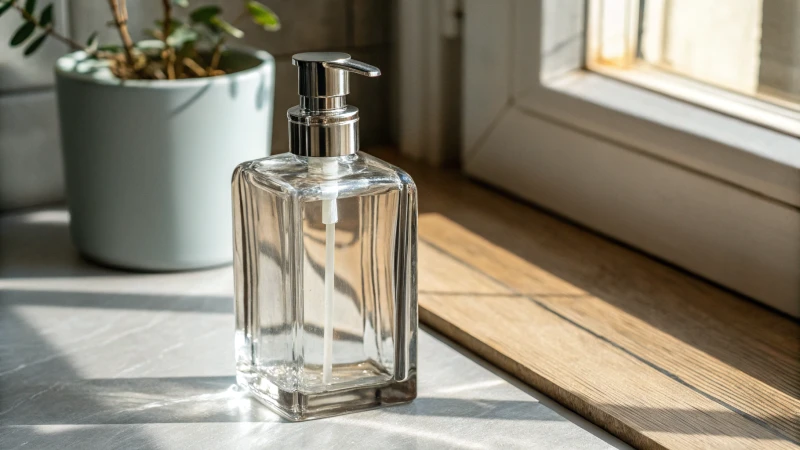
Designing the perfect glass bottle for personal care products is like finding the sweet spot between style and practicality.
To design glass bottles for multi-use personal care products, I focus on versatility, durability, and aesthetics. By incorporating universal neck sizes, using robust materials, and customizing designs, I ensure the bottles are both functional and eye-catching.
I remember when I first started designing glass bottles, I was fascinated by how a simple change in the neck size could make a bottle compatible with different dispensers. It felt like solving a puzzle where every piece had to fit perfectly to enhance user experience. The trick is to make them durable enough to survive a tumble in my bathroom yet stylish enough to sit proudly on my shelf. Balancing these elements while ensuring they’re easy to refill and environmentally friendly makes each design challenge uniquely rewarding.
Glass bottles are not suitable for multi-use products.Vals
Glass bottles can be designed for multi-use by focusing on durability.
Universal neck sizes enhance glass bottle adaptability.Echt
Using universal neck sizes allows for easy interchangeability of caps.
What are the key features of versatile glass bottle designs?
Ever wondered what makes some glass bottles stand out in versatility and style?
Versatile glass bottle designs feature interchangeable closures, robust durability, eye-catching aesthetics, and compatibility with various formulations. These attributes not only accommodate diverse uses but also enhance consumer ease and support eco-friendly practices.
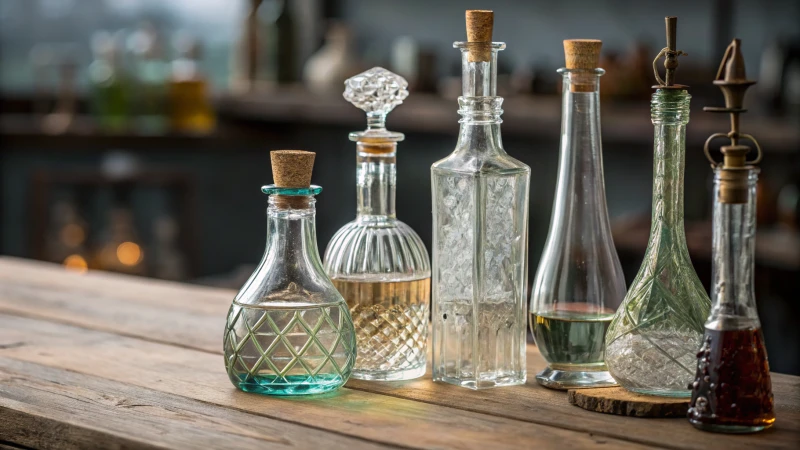
Interchangeable Closures
I remember the first time I encountered a bottle that could switch between a pump and a spray—it was a game-changer! Versatile glass bottles with interchangeable closures allow brands to use one design for multiple products, cutting down costs and boosting efficiency. Universal neck finishes1 like 24/410 make life easier by ensuring seamless compatibility.
Durability and Reusability
Imagine dropping a bottle and watching it bounce back unscathed. That’s the magic of using thick-walled borosilicate or soda-lime glass. These materials resist thermal and chemical shocks, making them perfect for long-term use. Add a protective silicone sleeve, and you’ve got a bottle that eco-conscious consumers will love for its durability. Durable glass options2 really do make a difference.
| Material | Benefits | Example Usage |
|---|---|---|
| Borosilicate Glass | Thermal Resistance | Essential Oils |
| Soda-Lime Glass | Cost-Effective | Lotions |
Aesthetic Customization
I’ve always been drawn to beautifully designed bottles, haven’t you? Aesthetic customization can transform a simple container into a statement piece. Whether it’s custom embossing or unique color gradients, these design elements elevate a brand’s image and make products truly stand out. Decorative techniques3 offer endless possibilities for creativity.
Compatibility with Formulations
When it comes to packaging, chemical compatibility is non-negotiable. Glass bottles are naturally chemically inert, preventing contamination. Tinted glass or UV-blocking coatings further protect sensitive products from light damage. Testing ensures they work with both high and low-viscosity formulations, keeping products safe.
User-Centric Design
There’s nothing quite like a bottle that’s easy to use. Features like graduation markings for dosing precision or non-slip textures for better grip can drastically improve user experience. Ergonomically designed shapes also make handling more comfortable across various applications.
Sustainability Considerations
Sustainability isn’t just a buzzword—it’s a necessity. Designing bottles with 100% recyclable materials and promoting refillable systems are steps toward reducing our ecological footprint. Post-consumer recycled (PCR) glass options cater to environmentally conscious consumers seeking eco-friendly packaging4. Every small change counts towards a bigger impact.
Interchangeable closures reduce inventory costs.Echt
Using one bottle design for various products minimizes the need for multiple packaging types.
Borosilicate glass is cost-effective for lotions.Vals
Soda-lime glass, not borosilicate, is known for being cost-effective and used in lotions.
How Can Durability Be Enhanced in Glass Bottle Manufacturing?
I remember the day I held my first glass bottle and thought, "How can we make this last a lifetime?
To make glass bottles more durable, manufacturers like me focus on using tougher glass types such as borosilicate, employing advanced annealing techniques, and adding protective designs like rounded edges or silicone sleeves.
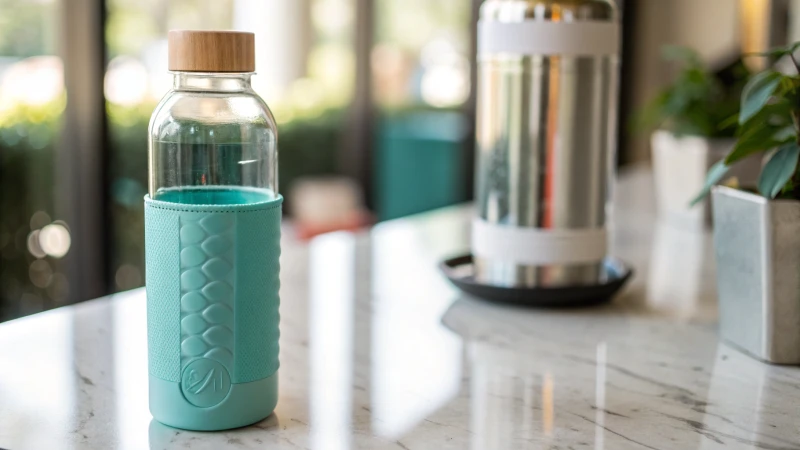
Choosing the Right Glass Composition
I can still recall the moment I discovered borosilicate glass5. Its superior thermal and chemical resistance seemed like the answer to every glass bottle problem I’d encountered. It was like finding a treasure chest for manufacturing durable bottles. In comparison, soda-lime glass, which I had used countless times, offered a balance of affordability and strength, making it a staple in our everyday production.
| Glass Type | Properties | Ideal Use Cases |
|---|---|---|
| Borosilicate | High thermal resistance, chemical inertness | Lab equipment, durable containers |
| Soda-lime | Affordable, good mechanical strength | Everyday glassware, containers |
Enhancing Through Annealing Processes
Back in the day, when I first learned about annealing, it was like unlocking a secret to unbreakable glass bottles. This process of slowly cooling the glass to relieve stress felt almost magical. Now, we use advanced techniques like tempering6 with precision-controlled cooling ovens to ensure every bottle stands the test of time.
Protective Design Features
Incorporating design elements without sacrificing beauty is an art I’ve come to appreciate deeply. We’ve added rounded edges and reinforced bases to spread out stress evenly. And yes, those silicone sleeves7 that wrap around the bottles like a comforting hug provide that extra layer of protection.
- Design Element | Benefit
- ——————– | ———————————-
- Rounded edges | Distributes stress evenly
- Reinforced bases | Prevents base fractures
- Silicone sleeves | Impact absorption, slip resistance
By weaving these strategies into our production fabric, we craft glass bottles that not only fulfill consumer dreams of durability but also align with our eco-friendly aspirations, cutting down on waste one bottle at a time.
Borosilicate glass offers superior thermal resistance.Echt
Borosilicate glass is known for its high thermal and chemical resistance.
Annealing makes glass bottles more prone to breakage.Vals
Annealing reduces internal stresses, enhancing the durability of glass bottles.
What Aesthetic Elements Elevate Glass Bottle Branding?
Ever wondered how the right design can make a glass bottle leap off the shelf and into a consumer’s heart?
To elevate glass bottle branding, I focus on unique shapes, custom finishes, and decorative techniques like embossing. These elements enhance brand recognition and consumer appeal, offering a premium feel.
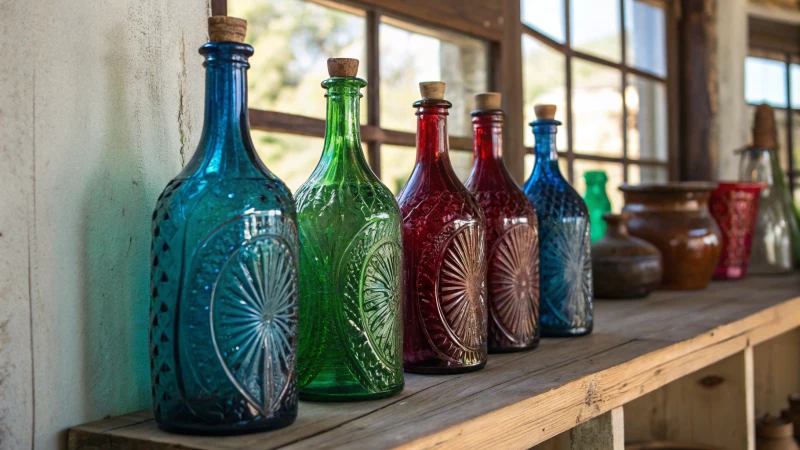
Custom Shapes and Sizes
Customizing the shape and size of a glass bottle can significantly impact brand identity. Unique designs not only catch the eye but also communicate a brand’s values. For instance, a slender bottle8 might convey elegance, while a robust shape could suggest durability.
You know, it’s amazing how much a simple change in shape can say about a brand. I remember when I was first getting into the industry, I encountered a brand that used these slender, elegantly curved bottles. It was like the bottle itself was whispering sophistication and grace. Then there was another brand that opted for a stout, more robust design—instantly conveying strength and reliability. It’s fascinating how these designs don’t just catch the eye; they tell the story of what the brand stands for.
Decorative Finishes
Applying decorative finishes such as matte, metallic, or frosted effects adds sophistication. These finishes can create visual interest and convey quality.
I once worked on a project where we chose a matte finish for a high-end skincare line. The result? It instantly elevated the product’s perceived value. People often associate matte with luxury—a subtle, almost understated opulence. On the other hand, metallic finishes scream boldness and are perfect for brands that want to make a statement.
| Finish Type | Effect |
|---|---|
| Matte | Subtle, luxurious |
| Metallic | Bold, eye-catching |
| Frosted | Elegant, soft-focus effect |
Embossing and Debossing
Embossing involves raising certain parts of the bottle’s surface to create a three-dimensional effect, often used for logos or patterns. This technique not only strengthens brand identity but also offers a tactile experience for consumers.
Embossing is one of my favorite techniques because it adds this tactile element that you just can’t ignore. There’s something about running your fingers over a beautifully embossed logo that leaves an impression—literally and figuratively.
In contrast, debossing9 involves pressing the design into the surface for a subtle effect.
Color Customization
Colors play a crucial role in branding. Incorporating custom colors through gradient or tinting techniques can make bottles instantly recognizable.
I’ve seen how a carefully chosen color scheme can make a product unmistakably recognizable. One time, we experimented with a gradient going from deep blue to clear—it was stunning! It gave off vibes of freshness and purity, which was exactly what the brand wanted to communicate.
For example, using vibrant gradients might imply freshness and purity.
Transparency and Light Effects
Utilizing transparent or translucent glass can highlight the product inside when contents are visually appealing.
There’s also something magical about playing with transparency and light effects by using colored glass10 like amber or green because it doesn’t just look pretty—it serves function by protecting sensitive formulations while offering an upscale look.
Conclusie
Incorporating these aesthetic elements into glass bottle design truly elevates a brand’s presence in the market. Every detail—from shape to color—works together to craft cohesive branding strategies that captivate consumers and enhance product appeal.
Custom shapes enhance brand identity.Echt
Unique bottle designs communicate brand values, such as elegance or durability.
Matte finishes are associated with budget products.Vals
Matte finishes are linked to premium products, enhancing perceived value.
Why is sustainability crucial in glass bottle design?
Ever wondered how something as simple as a glass bottle could help save the planet?
Sustainability in glass bottle design is essential because it reduces waste, promotes recycling, and contributes to a circular economy. By using eco-friendly materials and methods, designers meet consumer demand for sustainable packaging while minimizing environmental impact.
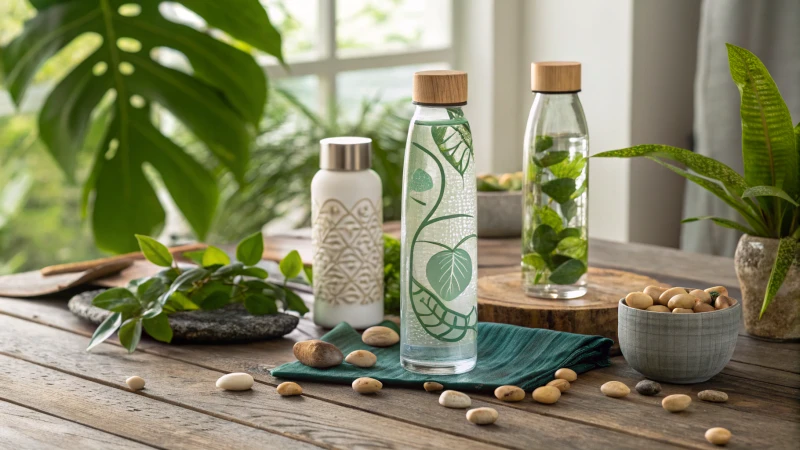
The Role of Recyclability
Picture this: I’m standing in my kitchen, holding an empty glass bottle that once held my favorite sparkling water. Tossing it into the recycling bin, I smile knowing that this little act is part of a bigger picture. Glass is inherently recyclable, which means it can be reused infinitely without losing quality. This makes it an ideal candidate for sustainable packaging solutions11. Designing bottles that are easy to clean and recycle helps manufacturers minimize their environmental footprint.
| Factor | Impact |
|---|---|
| 100% recyclability | Reduces waste in landfills |
| Infinite recyclability | Lowers energy consumption compared to new glass |
Encouraging Reusability
On a recent trip to the local farmer’s market, I spotted a charming stall selling homemade lemonade in beautiful glass bottles with a clever reusability twist. Beyond recycling, reusability significantly enhances sustainability. Designing bottles that can be easily refilled or repurposed reduces the need for single-use plastics and glass. Reusable designs not only support an eco-conscious lifestyle but also lower overall production costs across markets12.
Environmental and Economic Benefits
Sustainable design isn’t just good for the planet; it’s a smart business move too. When I decided to go green with my packaging line, I was pleasantly surprised by how much it resonated with consumers. By using recycled materials and reducing packaging waste, companies cut down production costs and appeal to eco-conscious buyers. Sustainable practices build a positive brand image and boost consumer loyalty and market share13.
Advancing the Circular Economy
The concept of a circular economy might sound like something out of a sci-fi novel, but it’s happening right now in the world of glass bottle design. This model focuses on keeping resources in use for as long as possible, extracting maximum value while minimizing waste. By integrating recycled materials and innovative designs, companies actively participate in this economic model, offering solutions that align with consumer values and expectations14. So next time you pick up a glass bottle, know that it’s not just about what’s inside but also about the journey it takes to get there—and back again.
Glass bottles can be recycled infinitely.Echt
Glass retains quality through recycling, allowing endless reuse.
Reusability of bottles reduces production costs.Echt
Refillable designs decrease the need for new materials, cutting costs.
Conclusie
This guide outlines essential strategies for designing versatile, durable, and aesthetically pleasing glass bottles for multi-use personal care products while emphasizing sustainability and user-centric features.
-
Explore universal neck finishes to understand how they facilitate versatile closure options. ↩
-
Discover why borosilicate glass is preferred for its durability and resistance to thermal shock. ↩
-
Learn how decorative techniques can transform glass bottle designs into brand symbols. ↩
-
Find eco-friendly packaging solutions that align with sustainability goals in the glass industry. ↩
-
Explore why borosilicate glass is ideal for durable products due to its high resistance to thermal and chemical stresses. ↩
-
Learn how annealing reduces internal stresses in glass, significantly enhancing its strength and durability. ↩
-
Discover how silicone sleeves can protect glass bottles by absorbing impact and providing slip resistance. ↩
-
Explore how unique glass bottle shapes can enhance brand identity and consumer appeal. ↩
-
Learn about the differences between embossing and debossing techniques and their impact on packaging aesthetics. ↩
-
Discover how colored glass bottles can protect product integrity while enhancing visual appeal. ↩
-
Explore various eco-friendly packaging solutions to better understand their impact on sustainability. ↩
-
Learn how reusability enhances sustainability and reduces environmental footprint. ↩
-
Discover the financial advantages of adopting sustainable packaging practices. ↩
-
Understand the role of a circular economy in promoting sustainable design practices. ↩



